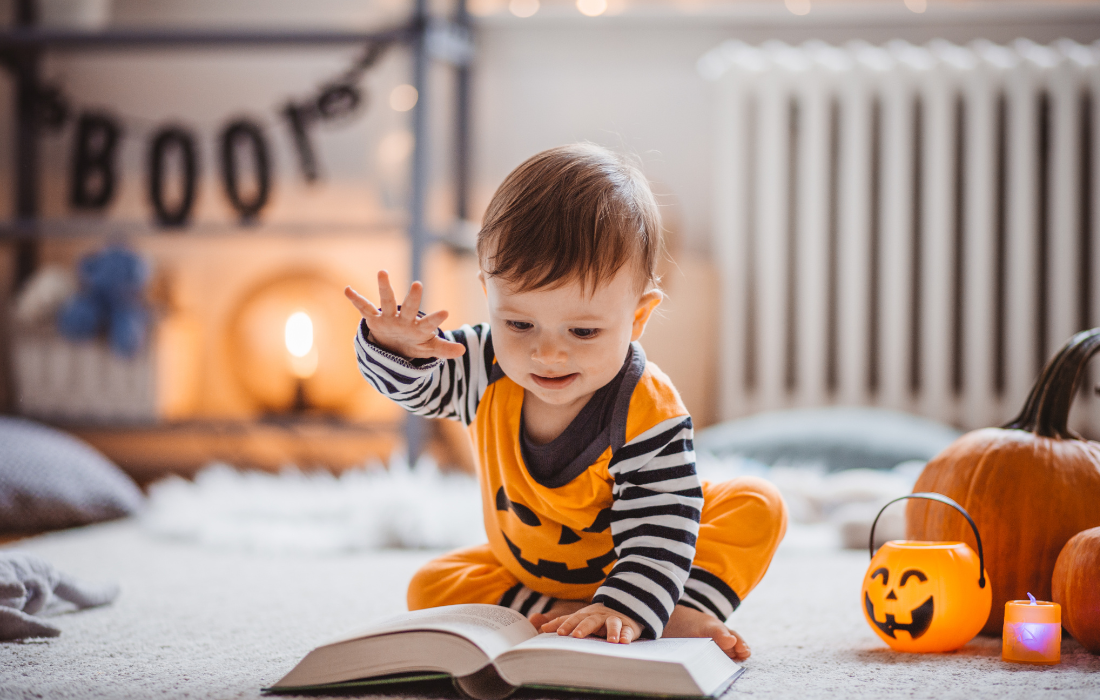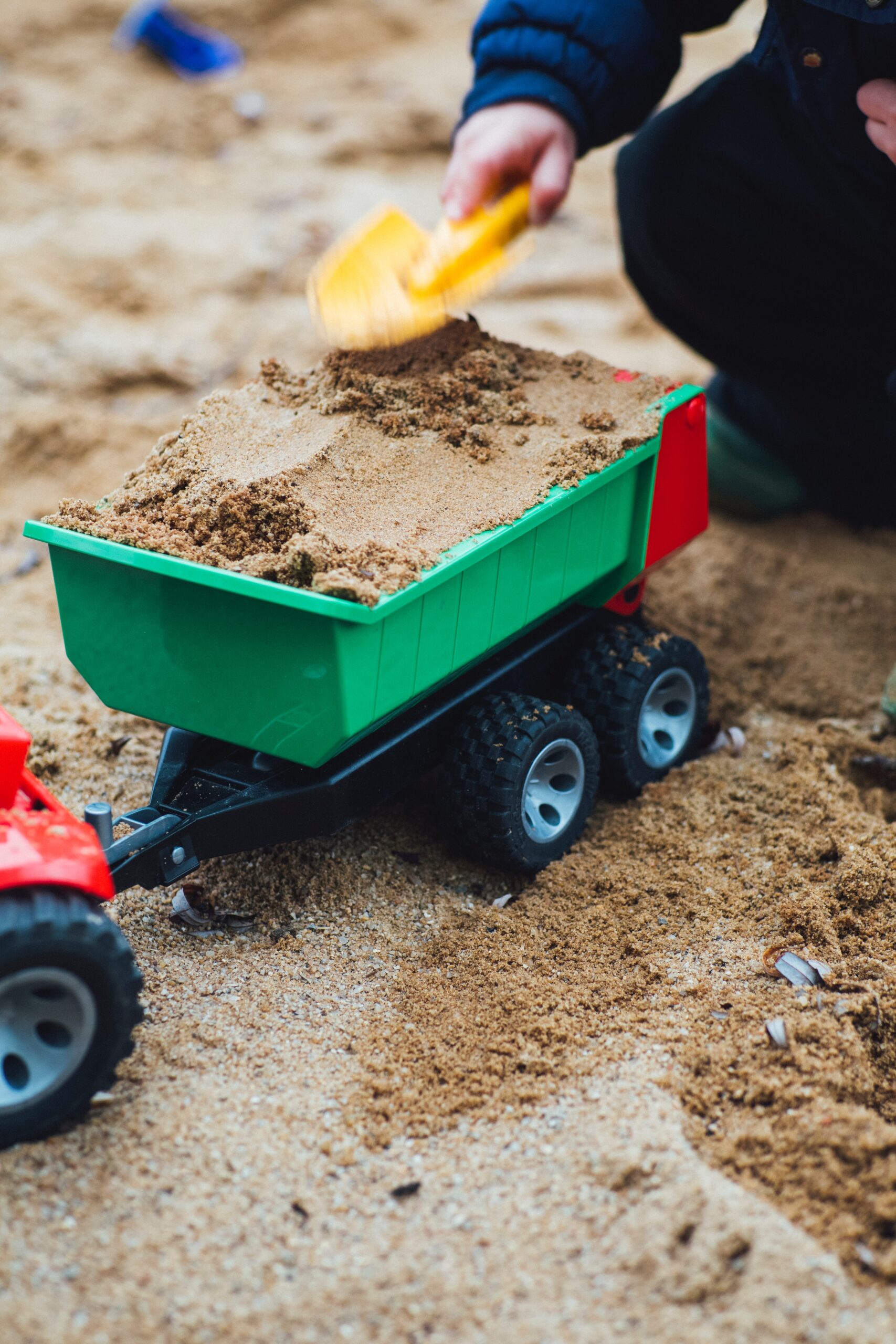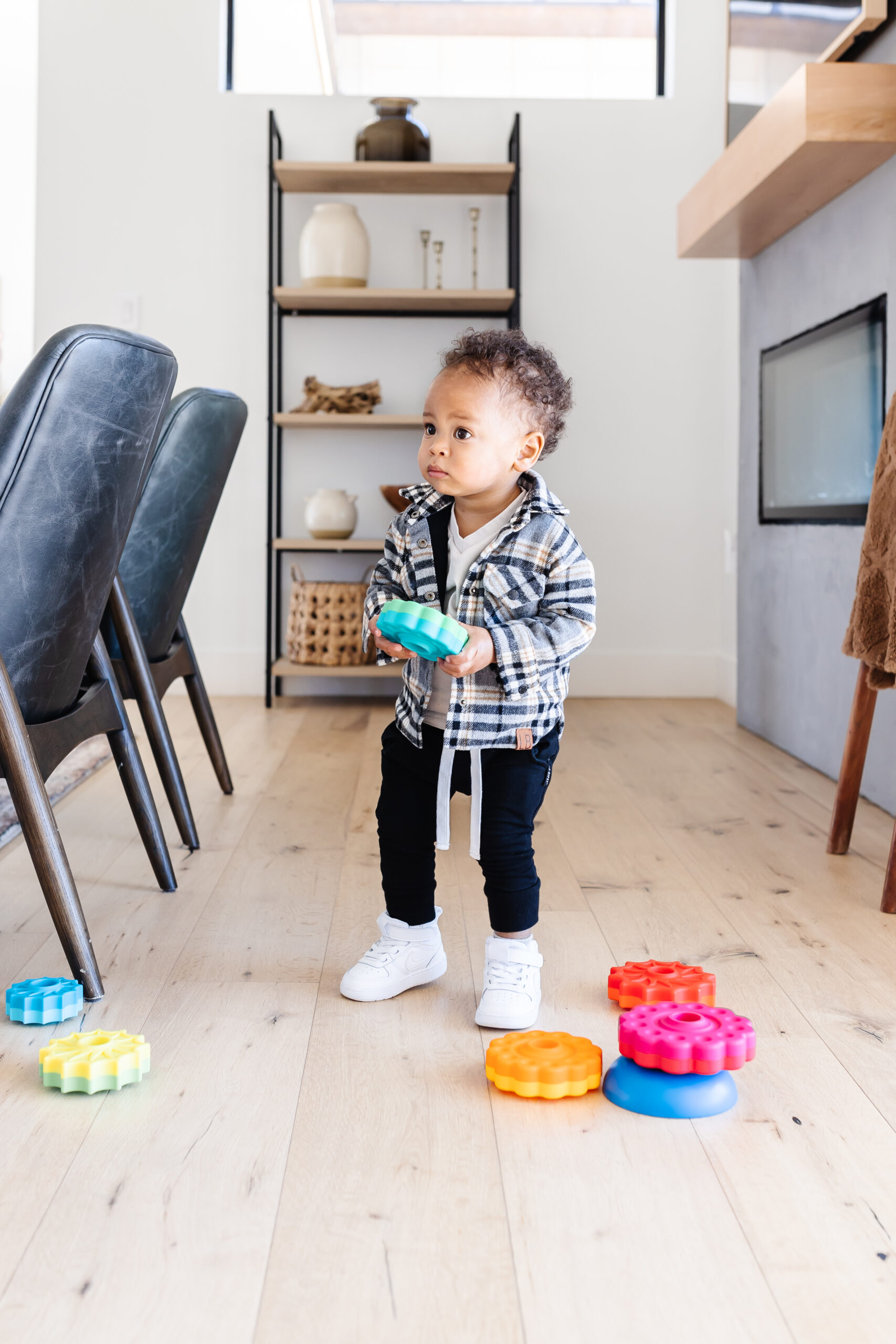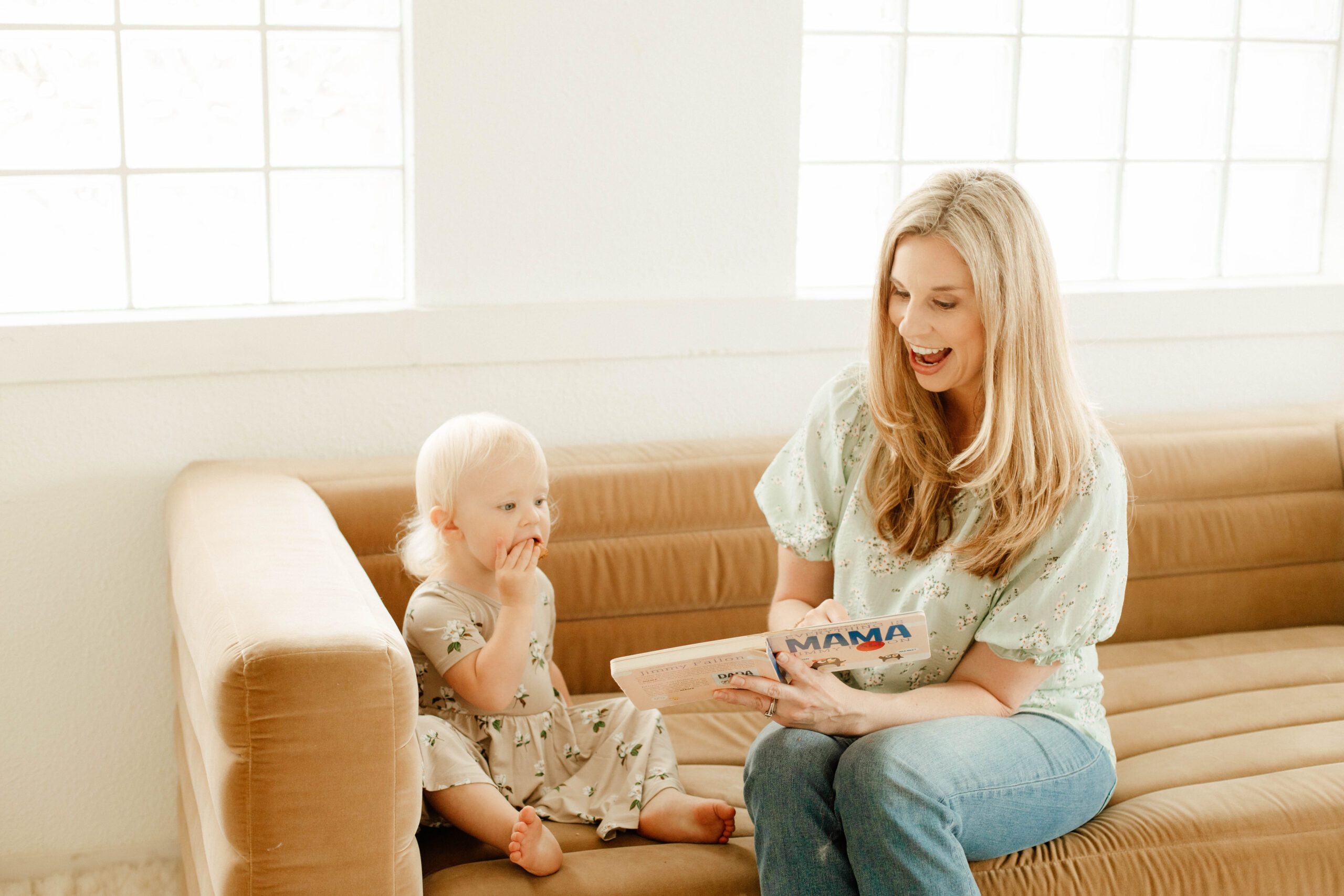It’s that time of year! Time for pumpkin patches, cooler weather, and new books! Books are such a great way to learn about new things and experiences. Books can also reinforce what your little one is learning about out in the world. For example, if you are planning to go to a pumpkin patch, you could read a book like Spot’s Pumpkin Surprise to learn about a pumpkin patch before you go. Then you could build on your child’s experience at the pumpkin patch by reading it after.
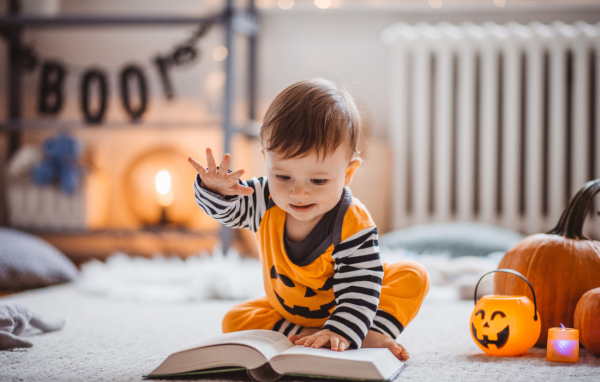
Books are also a great way for your little one to learn about things they can’t directory experience. If you live in a warmer climate where you don’t see a lot of leaves changing colors, books can help teach you about these things.
Books also have countless benefits for building language and literacy skills. It’s no surprise that early literacy is linked with better language outcomes later on (Sénéchal, M., & LeFevre, 2003). Researchers have also found that the number of words spoken to a child by age 3 was a better predictor of a child’s vocabulary at age 11 than the parents’ IQs, parents’ socioeconomic status, or which school the child attended (Hart & Risley, 1995). Books are a wonderful tool for building language. Knowing how to choose the right book to match your child’s language stage and interests can enhance these benefits even more because it keeps little ones engaged and gives language and vocabulary that is just right!
0-12 Months
For this age group, board books with colorful pictures are a great choice! Sensory books also fun for this age! When should you start reading to your little one? As soon as, or even before, they are born! Your baby can hear you reading while they are still in the womb! In one study, pregnant mothers recited nursery rhymes to their babies between 33 and 37 weeks gestation. Fetal heart rate monitoring showed they could recognize the familiar rhyme! Reading early and often helps your little one learn how language works, how to put words together, and early literacy concepts such as how to hold a book and that print has meaning.
12-18 months
Toddlers at this age are in full curiosity mode! Books that meet that need by providing sensory input such as touch and feel books are wonderful. They also provide added opportunities for you to model language such as adjectives and verbs. These will be helpful building blocks to have when your little one is ready to start combining words! Pop-up and books and lift the flap books are also great for this age because of the added element of surprise. Model the word “open” every time you lift the flap
Sensory Books:
Baby Touch and Feel: I love the sensory component of these books! Not only does it keep little hands engaged, but they provide great opportunities to add new language such as “soft and “flying” Verbs are the building blocks toward word combinations so it’s great to start emphasizing them early on
Pop-Up and Lift the Flap Books: Another great way to keep little ones engaged! It’s great to choose one target word such as “open” or “pop” and repeat it throughout the book
Who Says Boo? I love this whole series. The repetition in this book is great for first words and the mirror at the end is a fun way to encourage your little one to watch your mouth and their own
18-24 Months
Your little one’s language is growing every day! They’ll even start combining words by 24 months. Your toddler understands more about their worlds and more about the language associated with it. They may have more interests in books with simple plots. Books that rhyme are great for building early literacy skills that will set a strong foundation for later reading and writing skills. Here are some great Halloween books for you 18–24-month-old.
Don’t Push the Button! A Halloween Treat: This fun book keeps is super interactive so it keeps little ones engaged, This Halloween version is a fun twist on the original
Happy Halloween! Mirror and Me: Have fun seeing yourselves in different costumes with the mirror. Talk about the different costumes as you take turns looking in the mirror
Spooky Pookie and Moo, Boo Baa LaLaLa: Who doesn’t love Sandra Boynton books!? These two are great for Halloween
Trick or Treat Sound Halloween Book: The sounds in this book are really engaging and help teach some of the language associated with Halloween such as saying, “Happy Halloween!” and “Thank you!”
Halloween Social Story: Social Stories are wonderful for teaching little ones about new experiences and can put little ones at ease by teaching them what to expect. While they can be a helpful tool for children with autis,, they can also be helpful for all children, This free printable from Autism Little Learners teaches your little one about trick or treating such as what we do, what we say, etc. Trick Or Treating Story – Autism Little Learners
Preschool Favorites:
Preschool is the age when children really start to understand more complex concepts like story sequence. They like to talk about books characters and start to pay more attention to the print. Here are some for this age
References:
Hart, B. & Risley, T., (1995). Meaningful Differences in Everyday Parenting and Intellectual Development in Young American Children. Baltimore: Brookes.
Sénéchal, M., & LeFevre, J. A., (2003). Parental Involvement in the Development of Children’s Reading Skill: A Five-Year Longitudinal Study. Child Development, 73(2), 445–460.
